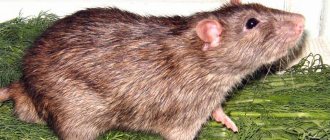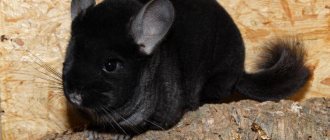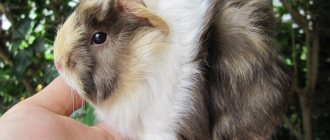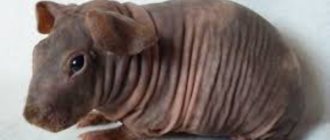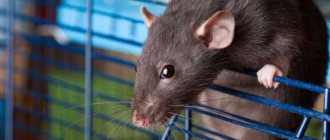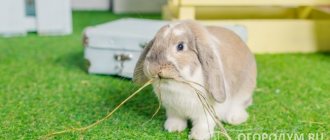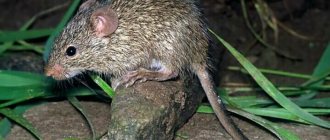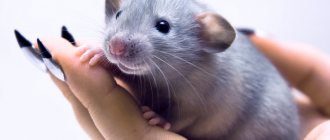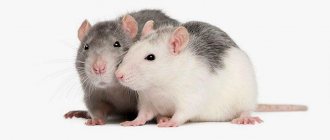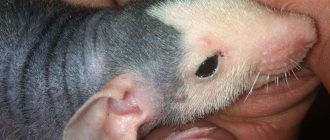Such a common animal as a mouse can be found in any climate zone of the Earth. Tropical, coniferous forests - in all areas these creatures were able to adapt. Due to their close proximity to people, they cause serious damage to agricultural properties.
In addition, they have the main advantage - laboratories where various drugs and other drugs are tested.
Based on the adaptability of mice, many people decide to keep them at home. In this article we will analyze the main aspects of keeping such a pet. We will also figure out what to feed domestic mice in captivity, and how often they should eat.
How to properly maintain it?
In fact, keeping pet mice is not a difficult task. It is easy for them to adapt to new living conditions, in addition, they are not too demanding.
With proper care, the lifespan of this creature will be approximately three years. If you get a pair of mice, keep in mind that they have a high fertility rate, and you need to immediately calculate where to put the offspring after the offspring.
Features of life
The life of a mouse The timid nature of a rodent is not at all associated with a cowardly disposition
The small animal is forced to behave carefully, since it has plenty of enemies
A mouse in the wild is trained in various skills - crawling, swimming, digging, and some species even fly. This existence allows rodents to overcome obstacles, adapt to new conditions, and get food everywhere.
The mouse makes its home in the ground, digging out complex labyrinths, in trees, in old hollows, bird nests, and under stones. Once in a person’s house, it settles down under the floor, in the attic, between the walls. Activates activity in the dark. Tries not to go too far from the nest or burrow.
Most species of mice live in packs. A whole hierarchy is built with a male leader and several dominant females. Each individual is assigned a territory where it can obtain food. The Sakis raise their offspring together, but after they “come of age” they are unanimously expelled from the family to live independently.
Mice hibernate in several places:
- in holes deep in the ground;
- haystacks in the field;
- in barns, warehouses, outbuildings, sheds, and a person’s home.
Rodents that remain in the field for the winter prepare food supplies. The hole has several chambers where the mouse carries everything that is valuable to it and will save it from starvation.
Natural enemies of mice are reptiles, wild animals, hedgehogs, large birds, dogs, cats. Since in our area the reptile is not as widespread as in warm countries, predators from this genus are snakes and some species of snakes.
In nature, a living mouse exists for only 1 year. Such a short period is associated with a large number of enemies and natural disasters. The lifespan of mice is genetically determined to be about 5 years. In artificial conditions they can live for about 3 years. In the laboratory they lived until 7.
Place of detention
A rectangular metal cage is best. It should be of such a size that your pet can move around freely and have room to do so. Gaps and wooden elements in the cage structure are simply unacceptable in this case.
The bottom of the house is covered with shavings. An excellent necessary addition would be houses, pots, a feeder, and a drinking bowl. Don't forget that the mouse will certainly want to play.
Make sure your pet is protected from drafts. Also, close use of heating elements is not recommended.
Note!
- How to choose a mattress and not make a mistake? Review of the best models, size table
- Cotton blanket: advantages and disadvantages, rules of choice and care
- Review of ideas for exterior home decoration
Food
Not all people who decide to have such a pet understand what mice eat at home. In fact, they do not go overboard with their food, and their diet is quite extensive. It includes corn, oats, and wheat.
Dairy products are not suitable for house mice. A varied diet of berries, fruits, and vegetables will not be amiss. Specialized food is perfect for mice. Make sure there is always fresh food in the cage.
The presence of mineral supplements and vitamins in the diet will be beneficial and have a positive impact on health. To grind down the incisors, get some tree branches, such as birch.
Rules for Effective Communication
To consolidate taming and effective communication with the pet, you need to allow the mouse to gradually get used to the owner. It is recommended to pick up your pet rodent several times a day, spending at least half an hour playing.
To begin to accustom a mouse to a nickname, at the first stage it is necessary to cover the cage with thick fabric - thanks to this, the owner’s voice will become the only source of information for the animal. After this, say the name of the mouse several times, and then remove the cloth and pamper your pet with a treat. After a couple of days, repeat the learning process in daylight.
The nickname for the mouse should be short, no more than 2 syllables and contain the consonant sounds s, n, m, k, ts, ch, sh, shch.
Ornamental mice can be fun pets that are fun to watch. They are quite easy to tame, but they need to be constantly looked after. The cleaning and feeding processes are not too complicated, but they can keep the owner’s house clean and provide the animals with a long, rich life.
Tips for choosing the right cage for decorative mice and its contents. Proper organization of nutrition for domestic rodents in the video:
Taming
If you want to tame your pet, start at a very early age, but not too often. However, this must be done very carefully, otherwise the small mouse may get injured.
When a friendship begins, the pet will spend time on the shoulders, in the arms, and also, he will recognize the owner. Some owners talk about the mouse's ability to remember its name and respond to it.
Note!
- How to protect a gazebo from rain and wind in summer and snow in winter - a review of the best options
Chicken - description, types, classification, nutrition and maintenance of domestic chicken (115 photos and videos)
- Fretka - lifestyle, care and character traits. 115 photos and videos tips for keeping a pet ferret
Training of decorative rats
The variety of types of games with a rat will surprise you
Decorative rats have a natural intelligence, which makes them easy to train. It has been noticed that individuals with colored fur are more capable of learning. White rats are more inert. In addition, their eyesight is worse.
Rules for training decorative rats:
- The last meal should be 10–12 hours before the start of classes. In this case, the pet will be more active in seeking the treat.
- The maximum lesson duration is 30 minutes.
- Before starting training, the animal is given the opportunity to sniff and explore the place where the lesson will take place. In this case, the rat will not be distracted by unknown odors.
- Training is carried out starting with the reinforcement of random movements and actions. If the pet jumps over any object, reward it with a treat and return it to its original position.
- They complicate the task only after the previous actions have been fully practiced and consolidated.
Tricks that decorative rats can perform:
- jump over an object;
- jumping through a hoop;
- searching for treats in the maze;
- walking on hind legs;
- taking a piece of paper out of the box;
- choosing a specific item from several located next to each other;
- running up stairs (including rope stairs).
Playing together brings pleasure to both the owner and his pet. Most popular toys:
- small balls (ideally from table tennis);
- beautiful pieces of paper;
- matchboxes filled with treats.
Watching your pet play is interesting and educational. The game reveals the character of the rat, and the owner begins to better understand his pet.
There are many tricks that complement the natural habits of rodents and will bring pleasure to the owners. To do this, you will need a treat - a piece of meat, a pumpkin seed. How to train a decorative rat:
- Return to the cage. After the animal has taken root, it can be released for a walk around the apartment. It’s easy to return the animal: at the same time you need to sprinkle food, knock the bowl on the floor and call your pet - he will come running.
- “Sit” or “serve.” You need to hold the treat over the animal’s head and say the command. The rat will learn that it gets a treat after it stands on its hind legs and will follow the order to “sit” every time, even without a treat.
- Run in circles. You can move the treat along a trajectory and give it to the animal after it completes the trick. Also, with the help of treats, it is easy to teach a rat to run up stairs.
The process of training rats is simplified due to their friendliness. Individuals can be easily tamed to climb into and out of their owner’s long sleeves. Rats love to rummage through boxes and find things there. By regularly rewarding and stroking them, rats can be taught to fetch small items or jump over obstacles. Rodents can also easily learn to climb a rope or hoop.
Of course, you should never hit your pets. Such behavior towards him will not give any results in terms of training. Among the simplest tricks that you can teach a rat is to respond to its name and come to its owner, and also to stand on its hind legs when ordered. Quite often, sunflower seeds or small pieces of fruit are used as rewards.
Moving away from the topic, I would like to talk about the origin of domestic rats. The 16th century, when rats filled all medieval cities, is a thing of the past, but it is from this moment that their domestication begins. Human breeding of rats reached its peak in the 19th century, when individuals were bred specifically to participate in battles. During the same period, albinos began to be used for laboratory research.
Of course, not all rats took part in battles or were experimental subjects; some individuals remained with people as pets. Since then, they have lived next to people, and their disposition has become more docile than that of their wild relatives.
To learn how to care for a rat, watch the following video.
Kinds
Many people believe that house mouse breeds are limited to only gray or white. But breeders have bred different types of pets that have curly, satin, long or short hair. The color also varies, which can be monotonous or multi-colored.
Mice colored in the colors of chinchilla, sable and other animals are not rare exceptions. In addition, it is worth mentioning a bald pet, which gives the future owner a wider choice.
Sense organs (eyes, ears and teeth)
The bat's eyesight is poor, but its ears can detect the slightest rustle several meters away. The auricle is huge.
Before flying, pushing off from the surface, the animal emits a piercing squeak, which, when it encounters an obstacle, returns. This echolocation allows one to navigate at night and serves as a technique for catching prey.
Eyes of medium size. Set on the front of the muzzle. Vision is black and white. When sunlight appears or imitates it, the bird experiences pain.
The jaw consists of incisors, molars, premolars, and canines. The pungency, shape and quantity depend on the nutrition of the chiropteran creature:
- in insectivores - 38, long, shaped like mortars;
- bloodsuckers have 20–26 teeth, sharp, large on a well-developed jaw.
Life activity
If you decide to breed mice, try to relocate the brood as soon as possible - there are often cases when the male simply eats them.
Keep in mind that the mouse will be active at night - during this period, food must be present. Don’t forget about clean water; without it, your pet won’t be able to live even three days. Like other animals, the house mouse is susceptible to disease.
The main signs of the disease are lack of appetite, lethargy, and rapid teeth growth. It wouldn't hurt to go to the vet if you really care about your pet.
Reason for choosing a mouse
Decorative pet mice are an ideal option for those who have decided to have their own animal or teach a child to take care of the weak, but are limited by time, funds and square meters.
You can squeeze the mouse
Unlike phlegmatic fish - other inhabitants that do not take up much space - they are able to respond to affection: you can stroke them, feel the warmth of a small body in a fur coat, they are quite affectionate and enjoy sitting in your arms.
Varieties: mouse and mouse are different
Oddly enough, tamed and domesticated mice are divided into only two types. The first species is the albino mouse, also known as the white laboratory mouse. The decorative house mouse is an animal weighing on average 30 grams. with a body 7-12 cm, a tail of the same length, hard, medium-length fur, often one-color: black, brown, gray, sandy color. The lifespan of this miniature animal is on average 2-3 years.
White mouse
The white mouse stands apart - the ancestor of the entire mouse movement. Bred before our era, this creature was a frequent guest in the homes of Chinese emperors, and later, brought to England, quickly won the sympathy of all pet lovers.
In the 19th century, they were attracted to participate in laboratory experiments, as a result of which a separate species appeared - the laboratory mouse. She was bred to participate in laboratory experiments to study social behavior patterns, test medications, and much more that directly benefits humanity. For pet lovers, this species is not so attractive, although albino mice can still be found in city apartments.
Each animal needs its own special space, which it will consider “its place” - sacred and inviolable. Therefore, before you bring mice home, you should take care of where they will live. It was before, not after. Because jars and cardboard boxes are absolutely not suitable for rodents. And any move is always stressful.
Avoid aquariums as well. They are cramped, stuffy, hot, the mouse will not be able to move normally in them and arrange a secluded corner for itself. The best solution would be a spacious cage with metal bars.
Rodent cage
Be sure to make it yourself or buy a small house - a hole where the mouse will spend all day long.
Add a wheel to provide your pet with physical activity and fulfill his need for movement. For the same purpose, take care of shelves, ladders and ropes. The animal will be happy to show you its dexterity, and you will also have fun watching its amusing movements.
Sawdust for rodents
Litter is a very important element. The layer should be quite impressive - at least 5 mm. Animals use it not only for its intended purpose, but also to decorate their house, and when there are drafts or low temperatures, they burrow into it to keep warm.
The material should be natural and preferably inexpensive: sawdust, dry peat crumbs, shavings, hay. Avoid cotton wool and sand - the first absorbs odors too well and gets tangled between your fingers, and the second can become a breeding ground for lice. But something tells us that you don’t want such neighbors.
